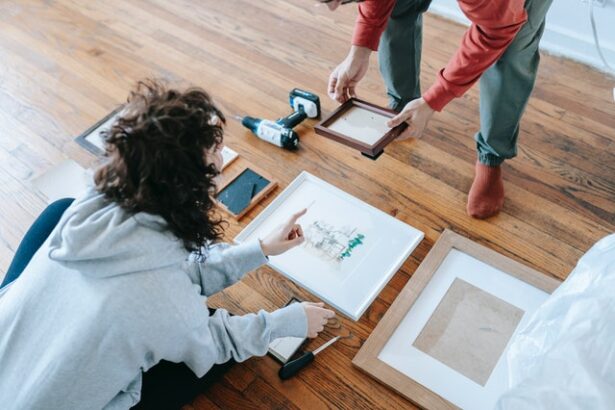
You have purchased a new home in Seattle, and now it’s time to continue onto this exciting chapter. However, most relocating experiences can be tiring, time-consuming, and stressful. Whether you do the work yourself or hire professionals, it can all seem overwhelming. You need to pack up and haul your entire life, often in a short period, and it isn’t easy to know where to start. But, with proper preparation, you can cross everything off your to-do checklist while still having time to sit back and breathe. For this reason, we have created a guidebook to help you organize, plan, and prepare for a move. You’ll be well equipped for the moving day and ready to settle into your new place seamlessly.
Organize, Plan and Prepare for a Move: A guide
To move like an expert, you should understand that planning is essential. It’s easy to get disorganized with all the scheduling, arranging, and paperwork you’ll need to do in the coming weeks. These suggestions can help you stay on track with your upcoming relocation.
Devise a moving strategy
Early in the preparation stage, you need to decide if you need professional relocation services for your Seattle relocation. Reliable movers can help with every part of the process, as long as you do your research and check their references. Also, look at their website and see what options they provide. Before agreeing to anything, you should ask for a moving quote in advance.
Then, set up a plan for when you will carry out activities. Should everything be moved in one day? Are things to be moved to multiple places, such as a storage space and your new home? Do you have to throw out junk?

There is also the matter of how far away your destination is. Any move that occurs within state boundaries is referred to as intrastate moving. On the other hand, interstate relocation involves crossing state boundaries. You may be subject to different moving rates depending on the sort of relocation you are planning. It is useful to do your research before even contacting the movers.
Have the necessary equipment
Make sure you have enough cardboard boxes, containers, etc. Check if you have something in the storage room or garage, ask friends and acquaintances, or visit the shops. A useful suggestion is to fill up baskets, suitcases, and other containers with items.

Throw away, give away, and sell
Get your things in order BEFORE you pack. Sort everything that needs to be thrown away, given away, sold, and kept. Maybe you have some old furniture or clothes you can sell. Are you going to throw away the old dining table? Post it online, and a lucky family can benefit from it. If you do this a couple of weeks before the actual move, you will have less to move, less to clean, and you will feel that you have got off to a good start.
Take a systematic approach
Maintaining order during the moving chaos is not easy. For this reason, try to create a system – a good tip is to label the boxes with the contents and which room they should be placed in. This will save you time when you start unpacking in your new home. You can also use transparent plastic bags to pack clothes and bedding, so it is easy to identify the contents.
It may pay off to check if you are insured in case an accident occurs. To limit any damage, have plenty of bubble wrap, newspapers, towels, etc., to wrap fragile items such as glass and frames.
Packing fragile items
You should know the best way to wrap up and box your sensitive possessions so that they arrive in one piece at your new residence. Consider wrapping your valuables in plastic wrap and photographing your devices before disconnecting them.
Be careful when moving large and heavy furniture since it is easy to get scratches on both the furniture and the floors. If you are dismantling larger pieces, remember to fasten the corresponding screws to each piece of furniture.
If you have any precious artwork, like paintings and sculptures, you need to put extra special care into the process of getting them ready for transfer. Artwork can be big and bulky, and even the elements designed to protect it—the frame and glass—might damage it during relocation. You will need to match the artwork with appropriately sized boxes, secure it with paper and bubble wrap, and specifically mark the boxes so whoever carries them knows to treat them with extra care. As an added precaution, you can hire art movers who specialize in these types of items.

Check the technicalities
Check deadlines for termination of various services related to your home. Services that may be worth checking are electricity and rent, internet, cable, and newspaper and magazine subscriptions.
If you have children, you also need to enroll them in a new school, which means doing research on the school districts is a must before the move.
Pack an essentials bag/box
After a long day of packing, the last thing you want is to look through all the boxes for essential items. Therefore, pack a box with a change of clothes, toiletries, toilet paper, coffee maker/kettle, and some plates and cutlery. This way, the first day in your new home will be much more comfortable.
The big moving day
Moving day is finally here, and you have hopefully completed the points above and are as prepared as you can be. Put aside plenty of time for the relocation, whether you are using a moving company or doing it yourself. It always takes more time than you think. Moreover, if any friends or family members are helping you relocate, make sure to treat them with some food or drinks. They will surely appreciate it and might even want to help the next time you decide to move!
Final thoughts
Having to organize, plan and prepare for a move isn’t a piece of cake, but it is very manageable and doable – with the right advice and a positive attitude. Once you’ve made it through the hard part, you get to design your new home however you envision it and enjoy all the wonderful things that await. Good luck!

